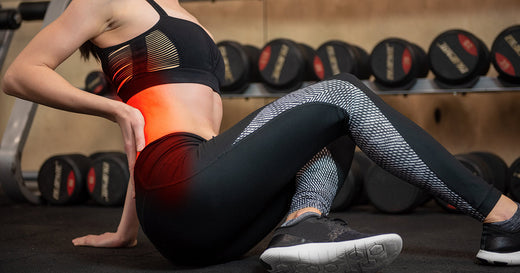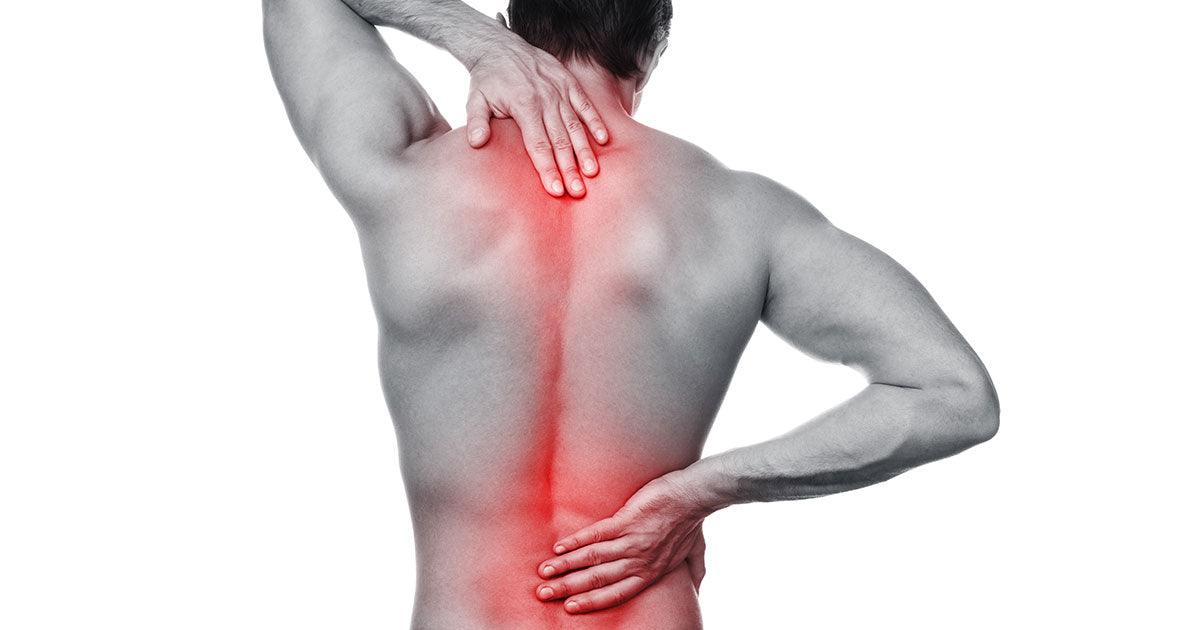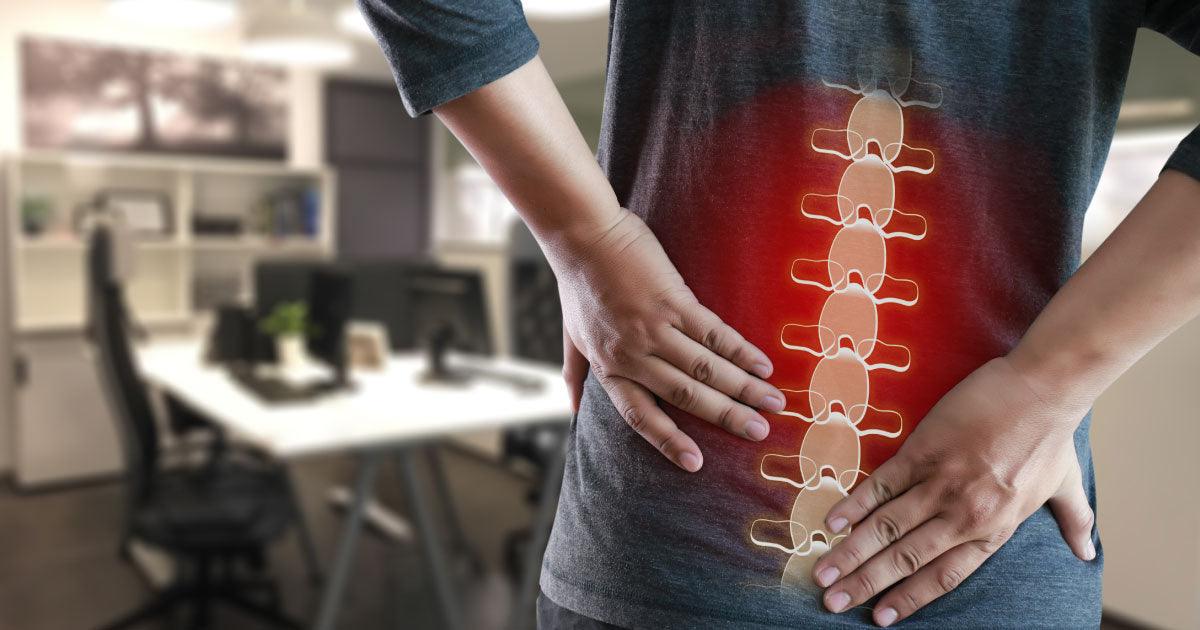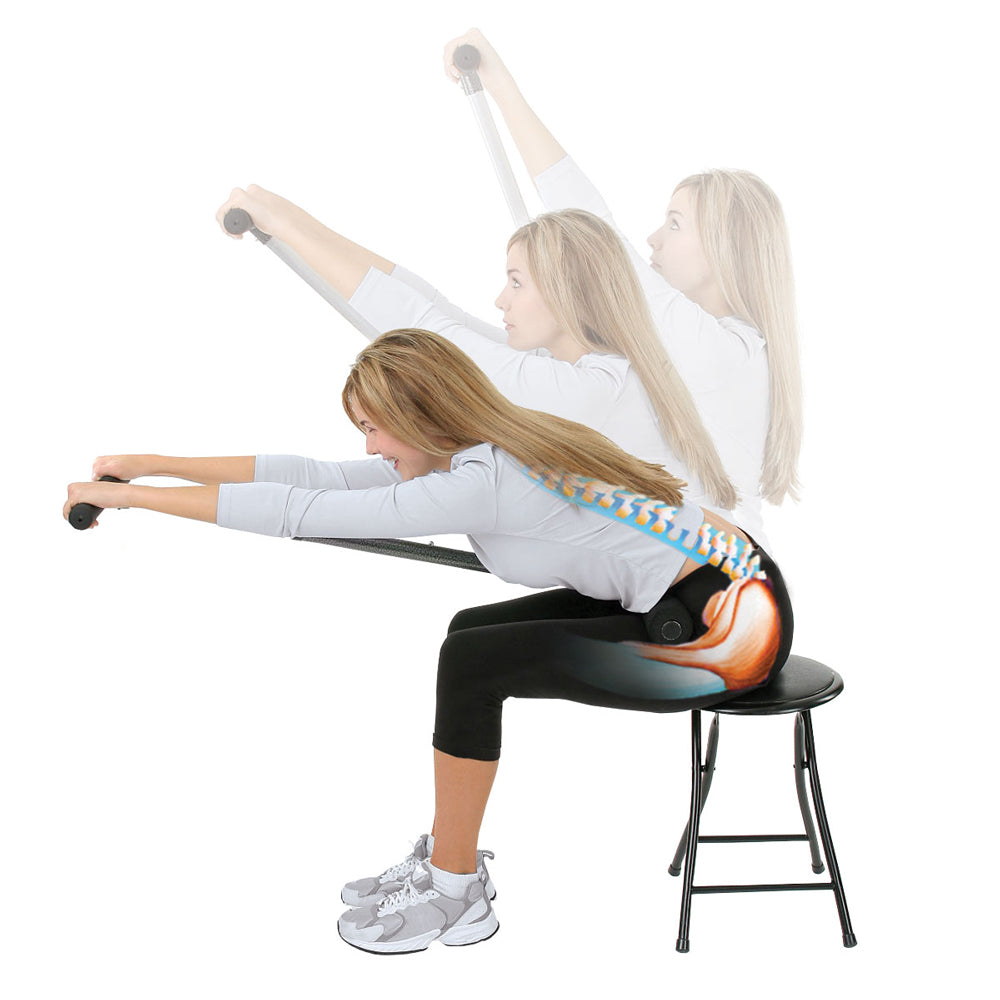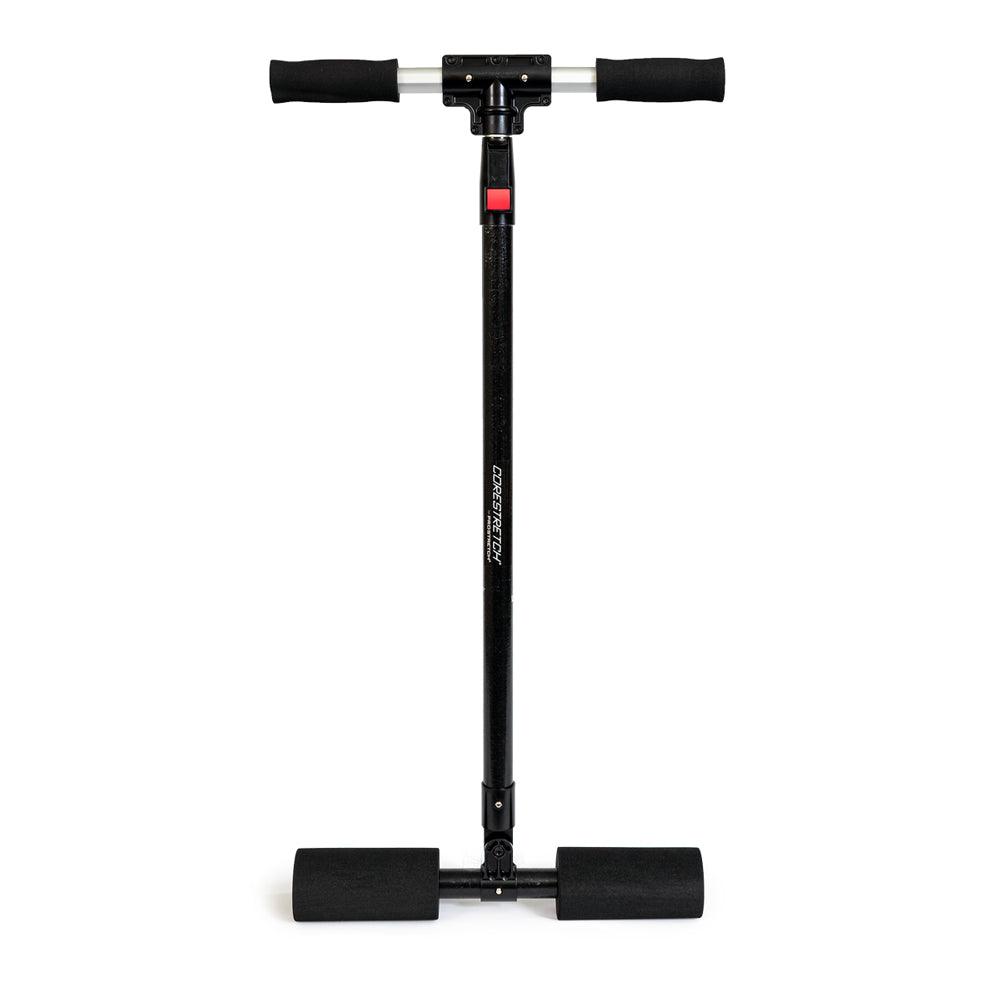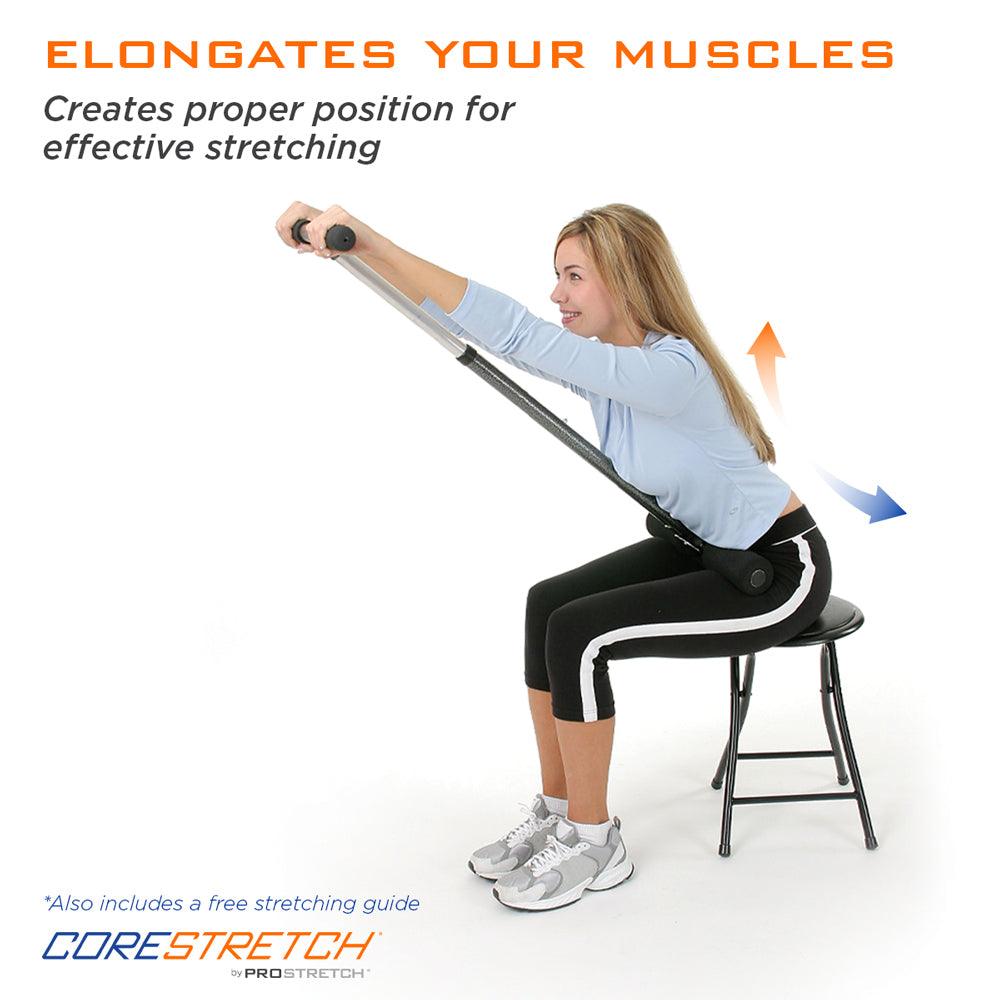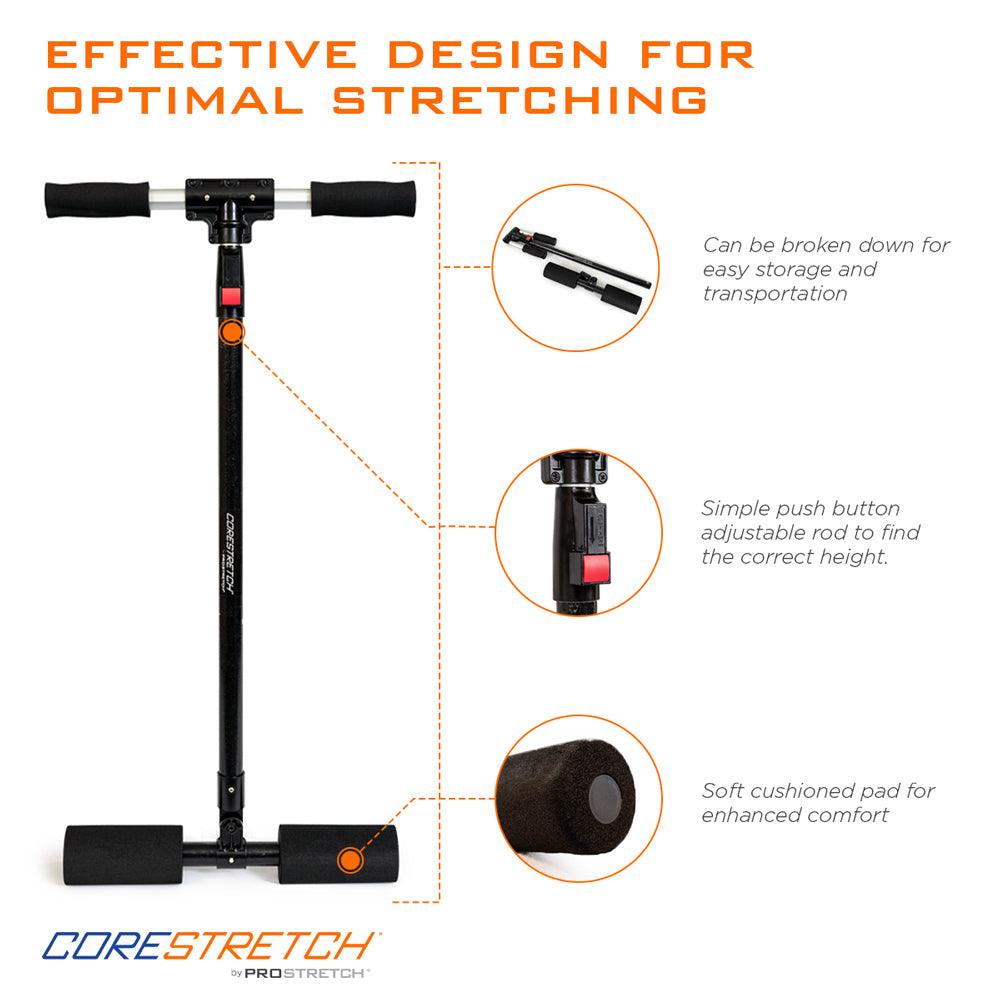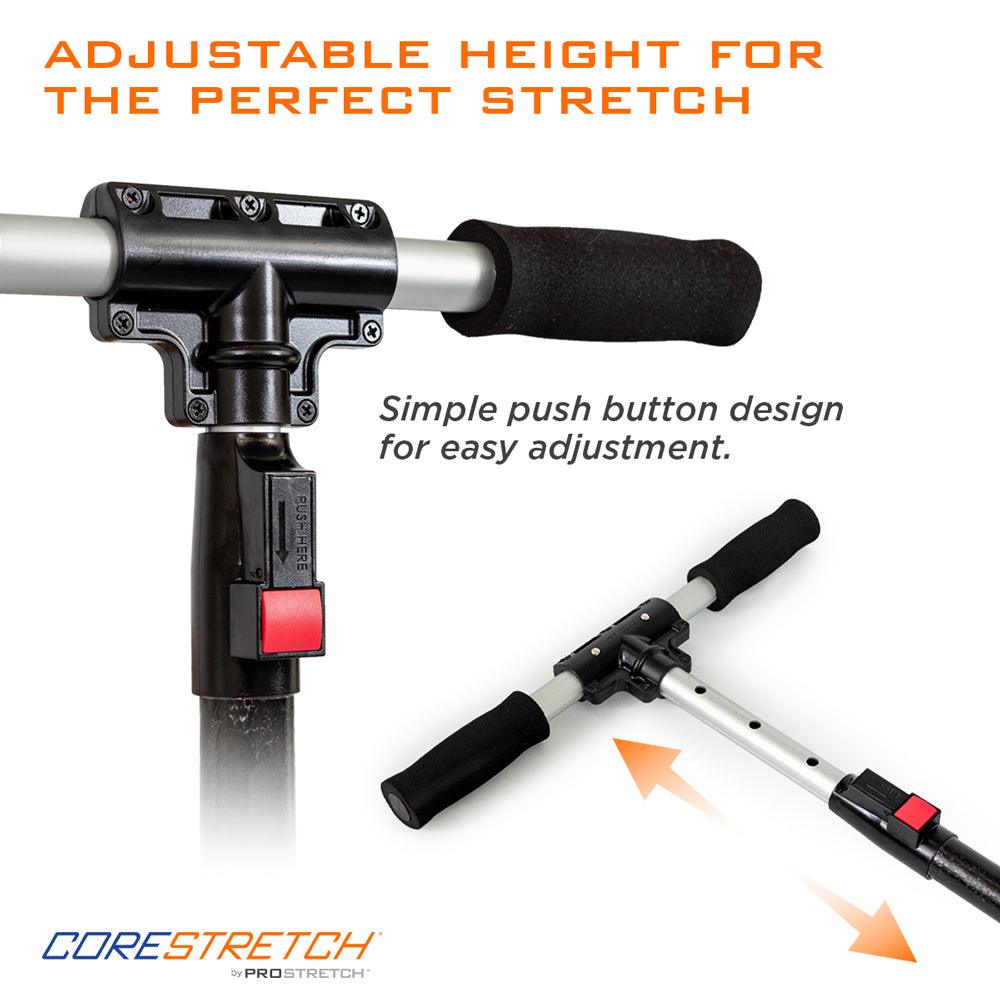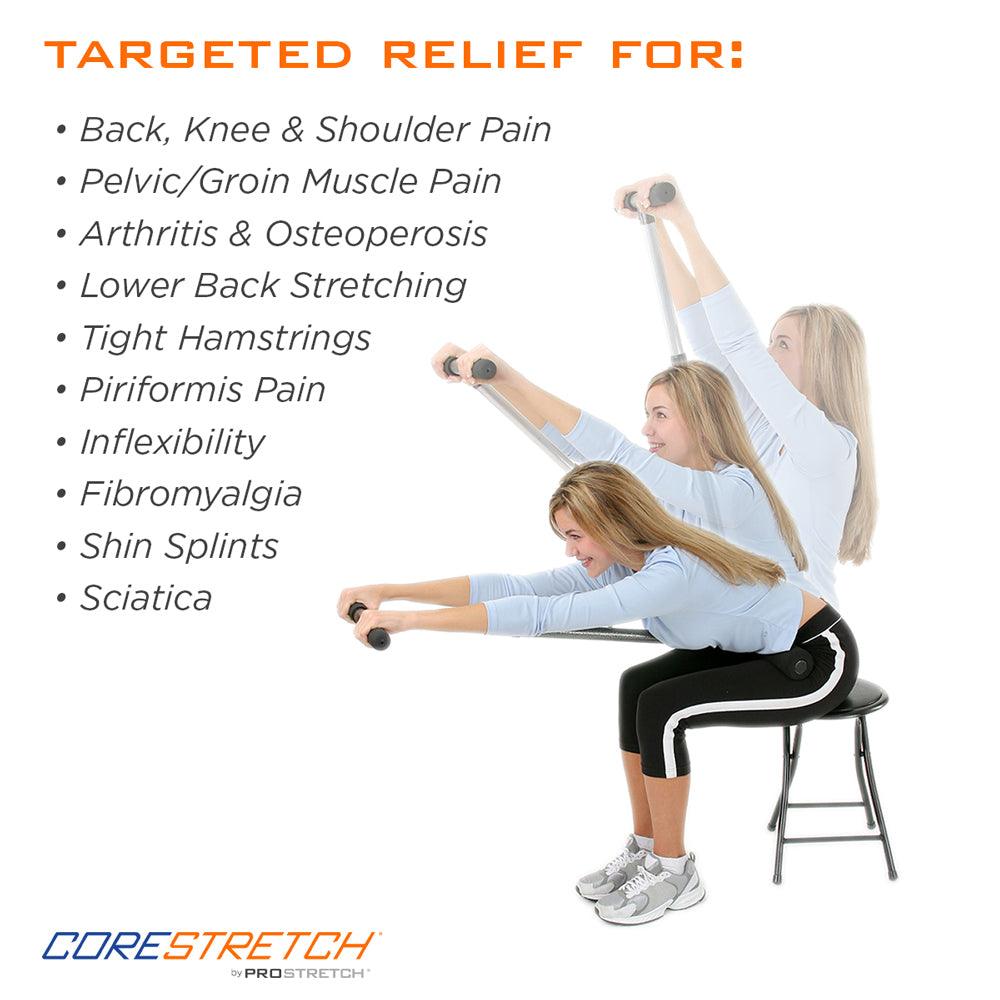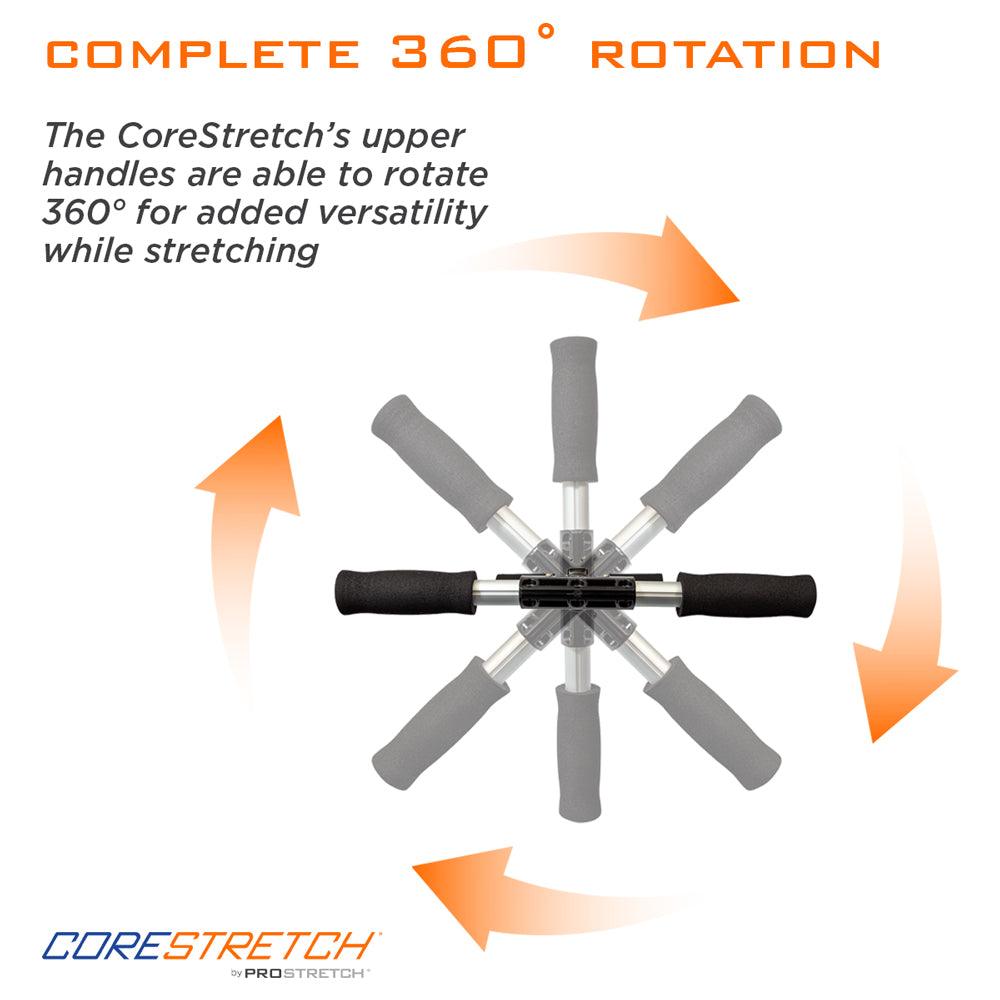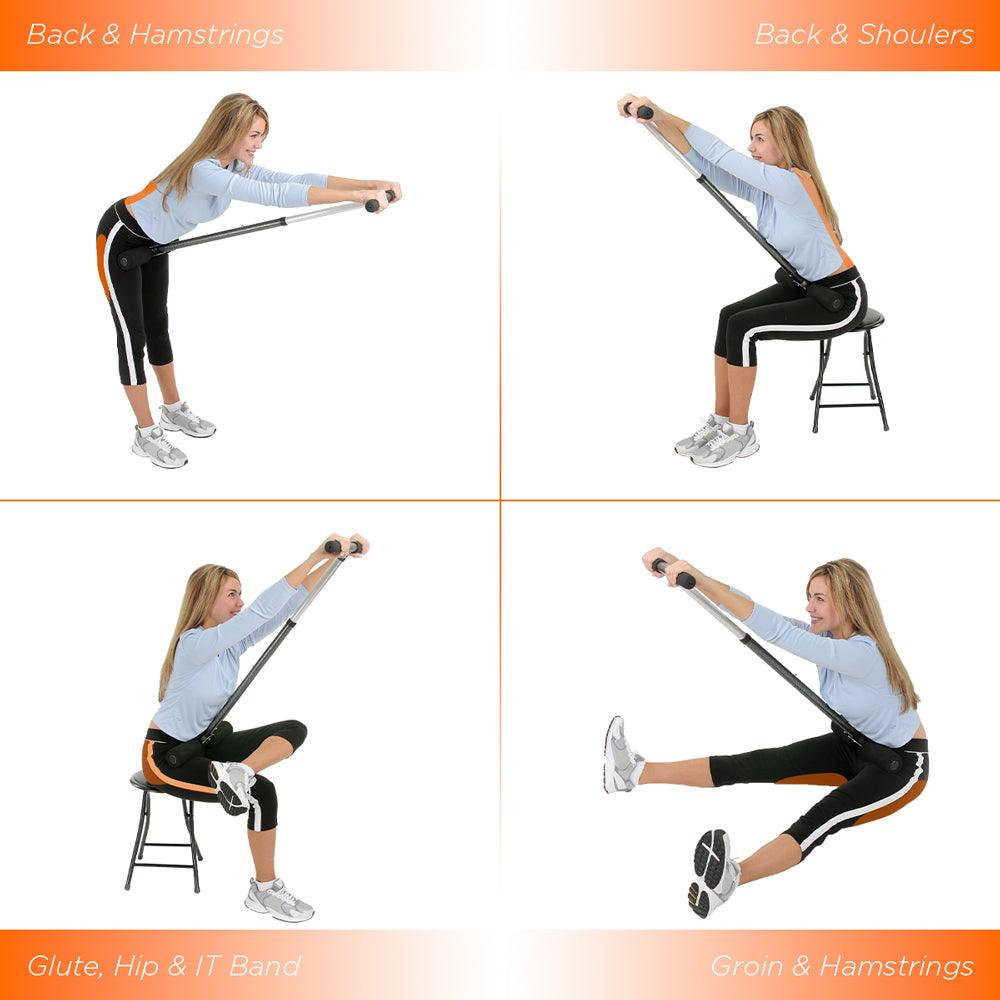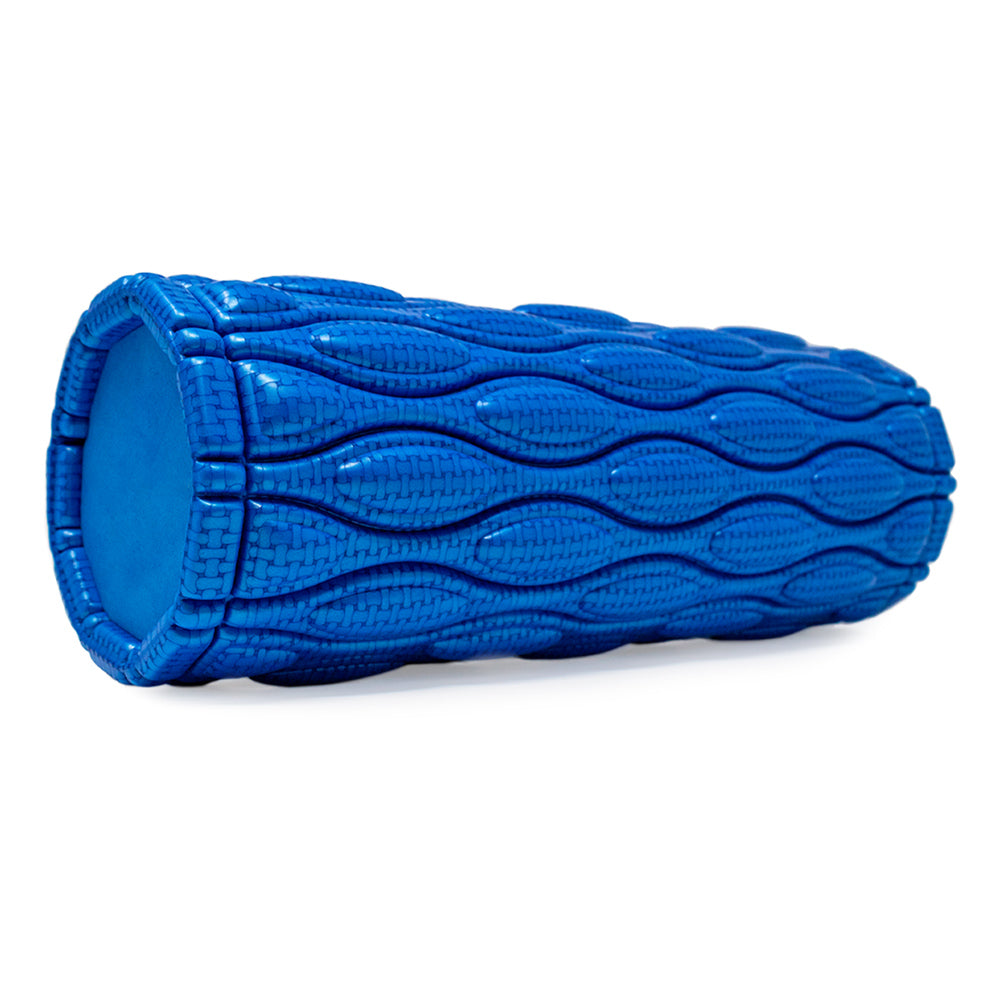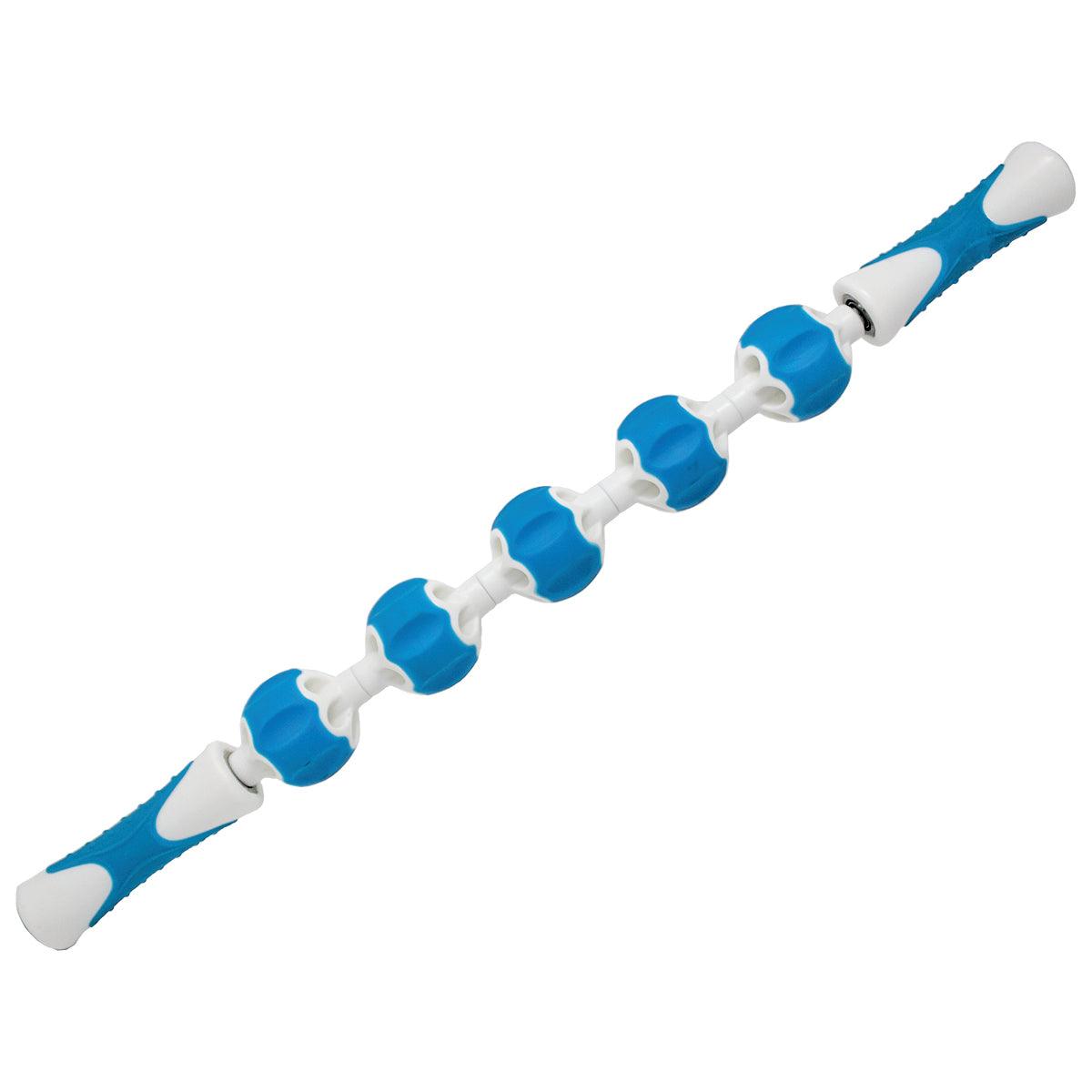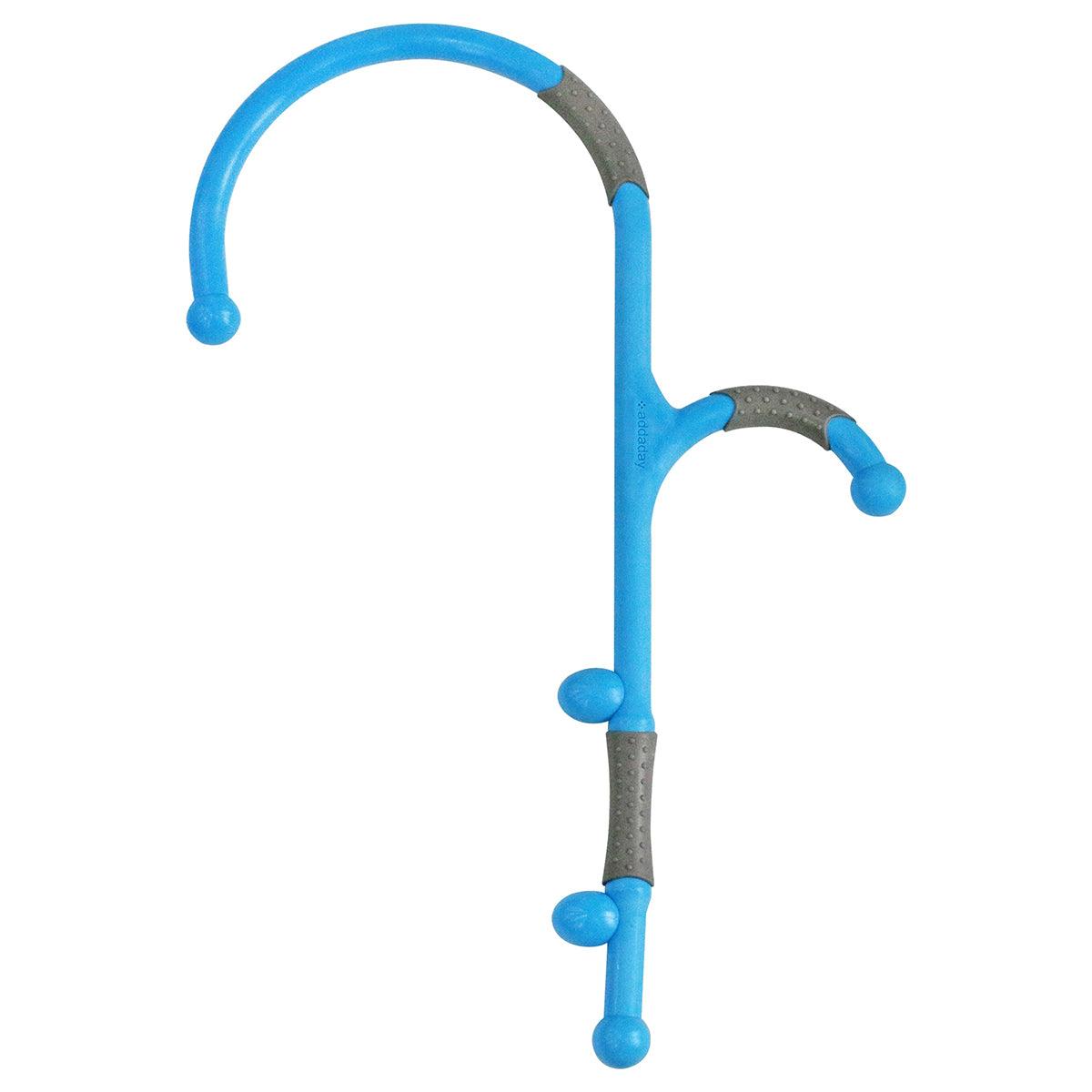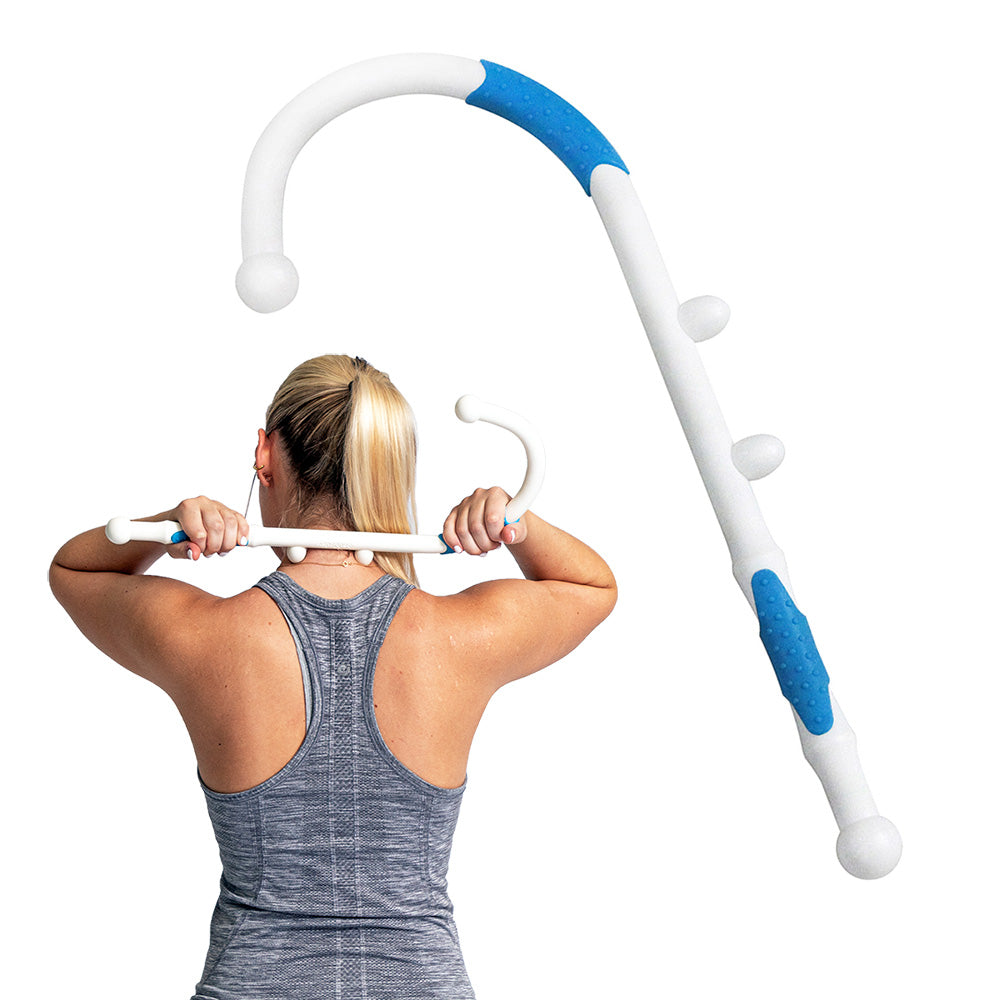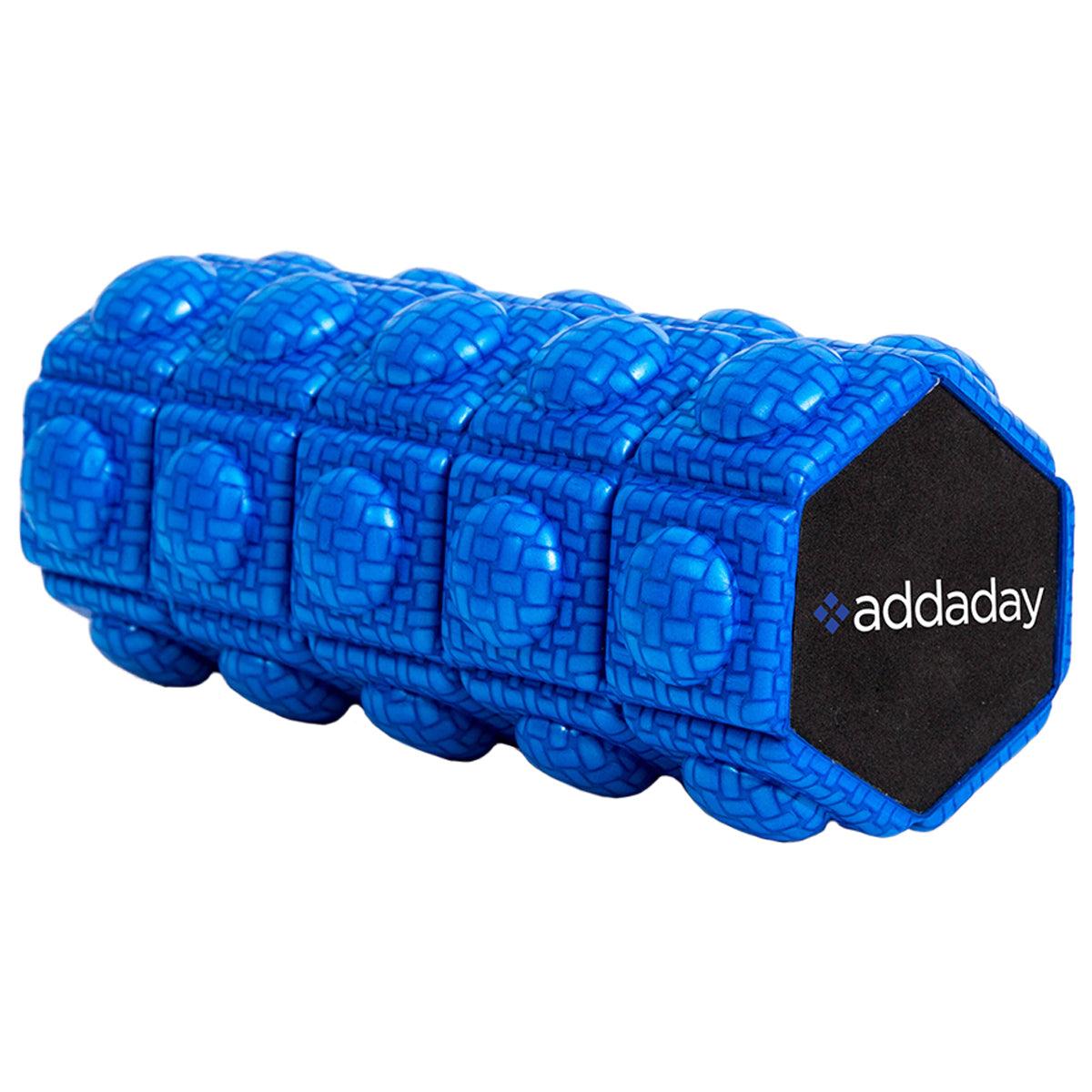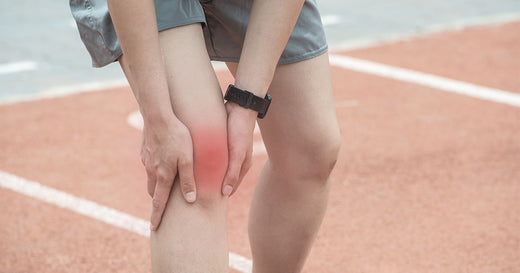Lower back pain is a common ailment and affect people of all ages and backgrounds. You can easily experience lower back pain relief, whether due to a sedentary lifestyle, poor posture, muscle imbalances, or injury. Finding relief and the right tools to prevent lower back pain is a top priority for many. This article will explore various exercises and tools specifically designed to alleviate and prevent your lower back discomfort. Before delving into the exercises, it's crucial to understand the possible causes of lower back pain and how it manifests.
Table of contents:
- Causes for Lower Back Pain Discomfort
- How Lower Back Pain Feels Like
- Stretch Your Lower Back with CoreStretch
- How to Prevent Lower Back Pain
Causes for Lower Back Pain Discomfort
Lower back pain may arise from a range of factors, such as muscle strains, ligament sprains, herniated discs, poor posture, and stress. Sedentary lifestyles such as desk-based jobs, prolonged sitting, and a lack of exercising can weaken the muscles that support the spine, contributing to the discomfort. Additionally, obesity, age-related degeneration, and improper lifting techniques are common culprits. Understanding the root cause is essential for an effective lower back pain relief plan.
How Lower Back Pain Feels Like
Lower back discomfort can present itself in diverse ways, ranging from a dull, persistent ache to sharp, stabbing sensations. Individuals may experience stiffness, limited range of motion, or radiating pain that extends into the buttocks or legs. Specific movements like bending, twisting, or lifting may aggravate your lower back pain. Paying attention to these sensations and seeking appropriate guidance to address the issue promptly is crucial.
Exercises for Lower Back Pain Relief:

Pelvic Tilts:
Improve core strength and flexibility. This exercise is recognized for its efficacy in relieving lower back discomfort and fostering improved posture.
- Recline on your back, keeping your knees bent and feet resting completely flat on floor.
- Engage your abdominal muscles while pressing your lower back against the floor.
- Hold for a few seconds, then release.
- Repeat 10-15 times.

Cat-Cow Stretch:
Helps improve spinal flexibility, release tension in the back, and promotes better posture. It's a gentle exercise suitable for individuals of various fitness levels and is often used as a warm-up or part of a stretching routine.
- Begin with your hands and knees in a tabletop position.
- Then, inhale, arch your back and lift your head and tailbone.
- Breath out, round your spine, and tuck your chin to your chest.
- Repeat this flow for 10-15 repetitions.

Bridge Exercise:
Beneficial for building strength in the posterior chain muscles and promoting lower back stability.
- Lie on your back with knees bent and feet hip-width apart.
- Elevate your hips towards the ceiling, engaging your glutes as you do so.
- Hold for a few seconds before lowering it back down.
- Repeat 10-12 times.

Child's Pose:
Allows individuals to release tension in the back and hips.
- Start by positioning yourself on your hands and knees, then shift your weight back, sitting on your heels.
- Extend your arms before you and lower your chest towards the floor.
- Hold for 20-30 seconds, breathing deeply.

Seated Forward Bend:
The Seated Forward Bend is beneficial for improving flexibility in the hamstrings and lower back, as well as calming the mind.
- Sit with your legs extended in front of you.
- Pivot at your hips and stretch toward your toes.
- Hold for 20-30 seconds, feeling a gentle stretch in your lower back and hamstrings.
Stretch Your Lower Back with CoreStretch®
CoreStretch provides a profound and efficient stretch for the entire back, including the hamstrings and hips. Originally crafted for utilization by physical therapists, CoreStretch was developed with the recognition that all movement originates from the body's central trunk, known as the core.
This innovative device not only encourages relaxation and elongation of tissues but also targets the key muscle groups constituting the core, facilitating a comprehensive stretch that aligns with the principles of its therapeutic origins. Watch the Video below to see a demonstration of CoreStretch.
How to Prevent Lower Back Pain?
Lower back pain prevention is essential if you don’t want to suffer the excruciating pain that so many other individuals suffer. Here are a few tips to prevent lower back pain:
- Incorporate the above exercises for lower back pain relief explained in this article to your daily routine.
- Consider using CoreStretch to stretch before and after any workout routines that you do.
- Use additional support and cushioning to your feet. Wearing shoe insoles can help you promote proper alignment of your entire body. When the arches of the feet are adequately supported, it helps distribute the body's weight more evenly and reduces the stress on the lower back. Recommended product: Tuli's RoadRunners Insoles
- Periodically give yourself a massage using a massage roller to target specific muscles in the lower back, releasing knots and tightness that may contribute to discomfort. Recommended product: ProStretch® Type A Stick Massage Roller
- Speak to your physician about medical causes and what they would recommend you do as back pain treatment or prevention.
Conclusion
Consider integrating these exercises into your daily regimen for a notable reduction in lower back pain. Begin gradually, paying attention to your body's signals. Seek advice from your healthcare provider before initiating any new exercise routine. Consistent engagement with these exercises is vital, as over time, they can fortify your core muscles, enhance flexibility, and contribute to a more robust, pain-free lower back. Take proactive measures to foster a stronger, resilient back, and relish the advantages of a more active and pain-free lifestyle.
PLEASE NOTE: The information on this website and article is for information only and should not be used as a substitute for consulting your doctor. Consult your doctor for proper diagnosis and rehabilitation.




